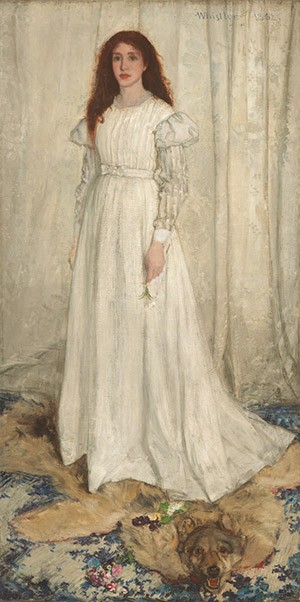The daunting task of building an American collection worthy of that mission was initially undertaken by the Gallery’s first chief curator, John Walker, under the directorship of David Finley. In 1948, expressing his connoisseur’s approach to building the collection, Walker noted:
"Some Americans rank among the great painters of the last 200 years. Here is the challenge to the collector of the art of this country: to show these masters in their full splendor; to prune away the undergrowth of average production until their loftier achievements can be properly seen.This has been the difficult goal we have sought to attain at the National Gallery of Art…In forming the collection of the National Gallery, we have tried to bear in mind that in the House of Art there are many mansions, and we have tried to show every important phase of American painting…. By our selection we have sought to prove that galleries hung with the greatest of American paintings can hold their own with galleries filled with the best European work of the same periods."
A number of the works Walker helped acquire in the 1940s still anchor the American galleries today, including William Merritt Chase’s A Friendly Call (Chester Dale Collection, 1943), James McNeill Whistler’s Symphony in White, No. 1: The White Girl (Harris Whittemore Collection, 1943, fig. 4), Childe Hassam’s Allies Day, May 1917 (gift of Ethelyn McKinney in memory of her brother, Glenn Ford McKinney, 1943), Winslow Homer’s Breezing Up (A Fair Wind) (gift of the W. L. and May T. Mellon Foundation, 1943), George Bellows’ Both Members of This Club (Chester Dale Collection, 1944), and George Inness’ The Lackawanna Valley (gift of Mrs. Huttleston Rogers, 1945).
Despite these early milestones, it would still be many decades before the Gallery’s American collections achieved the quality and breadth sought first by Walker and Finley. Even after the summer of 1950, when the rest of the southeast quadrant of the Main Floor was opened with twelve additional galleries, American painting was for many years featured in only a handful of rooms, with the balance of the new adjacent galleries often devoted to temporary displays of art from other countries. Unlike the French and Italian collections, whose character was determined by the gifts of Chester Dale and Samuel Kress, respectively, the American collections—even taking into account the prodigious generosity of Andrew Mellon and his son, Paul—were not to be defined or transformed by the vision of a single donor. Instead, the participation of collectors and foundations from across the country, guided by the connoisseurship and judgment practiced first by Finley and Walker and then by their successors, directors J. Carter Brown and Earl A. Powell III, and curators William P. Campbell, John Wilmerding, Nicolai Cikovsky, and Franklin Kelly, steadily bore fruit. Today American art can be found on permanent display in fourteen Main Floor galleries in the West Building, including all but one of the twelve galleries opened in 1950.
